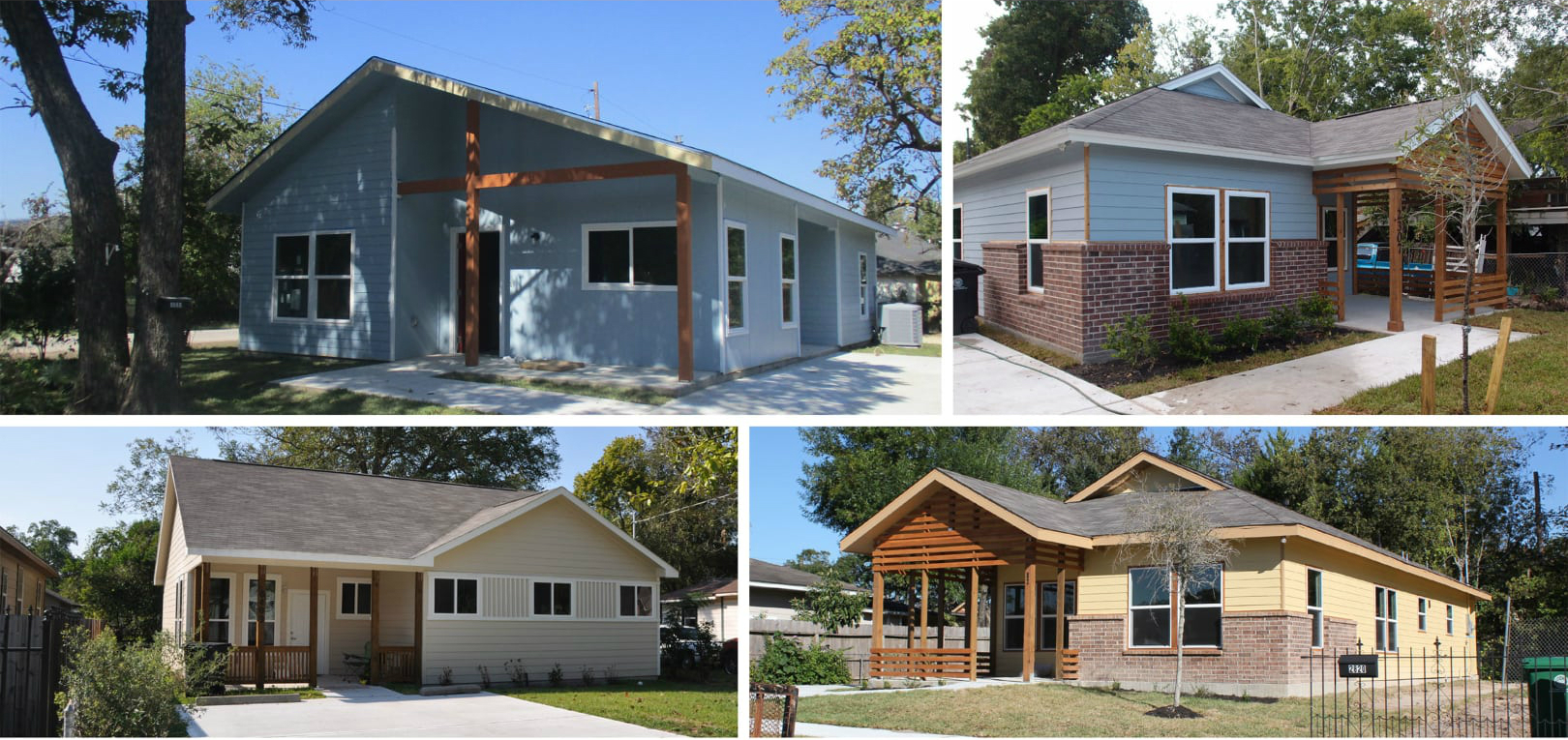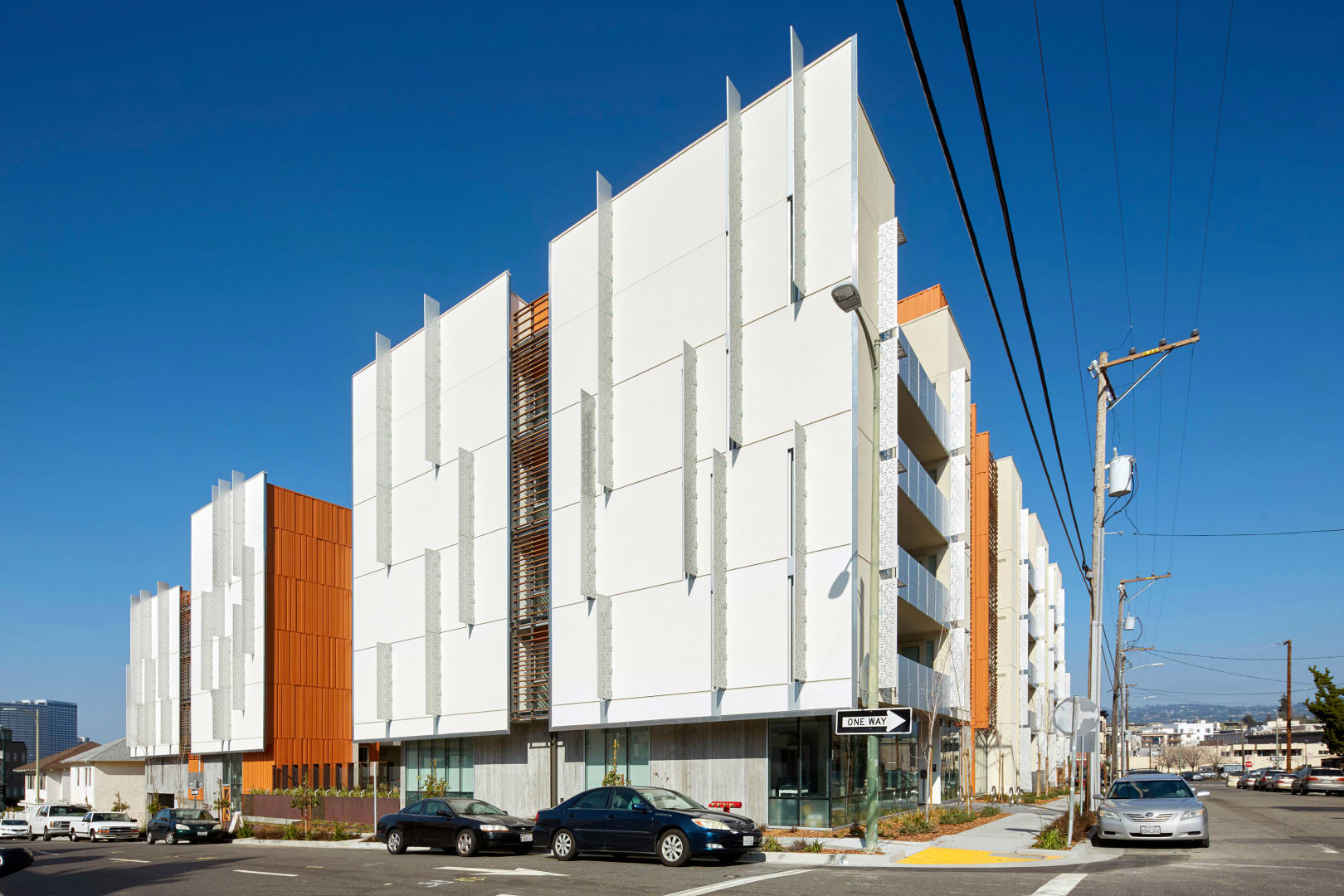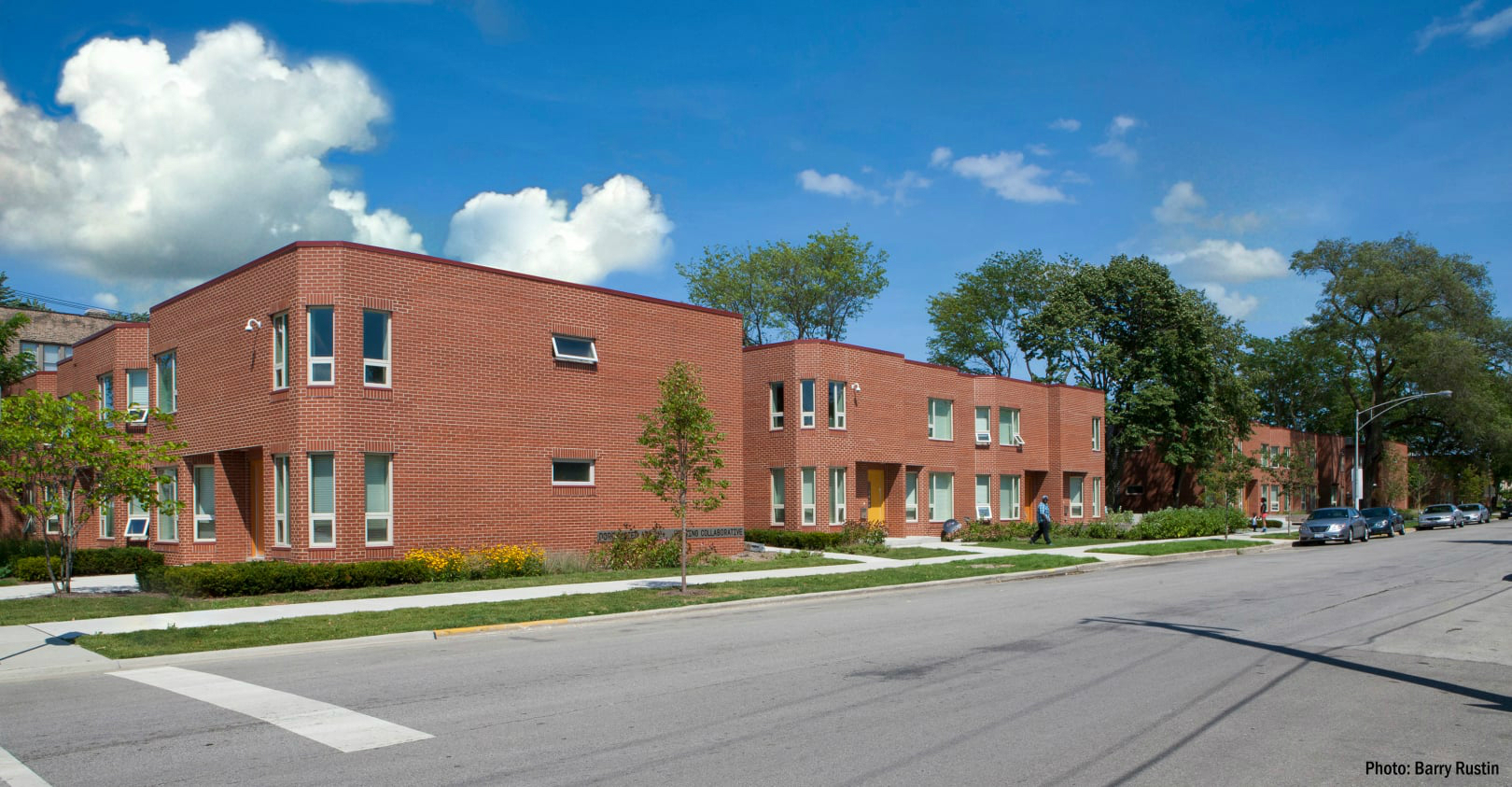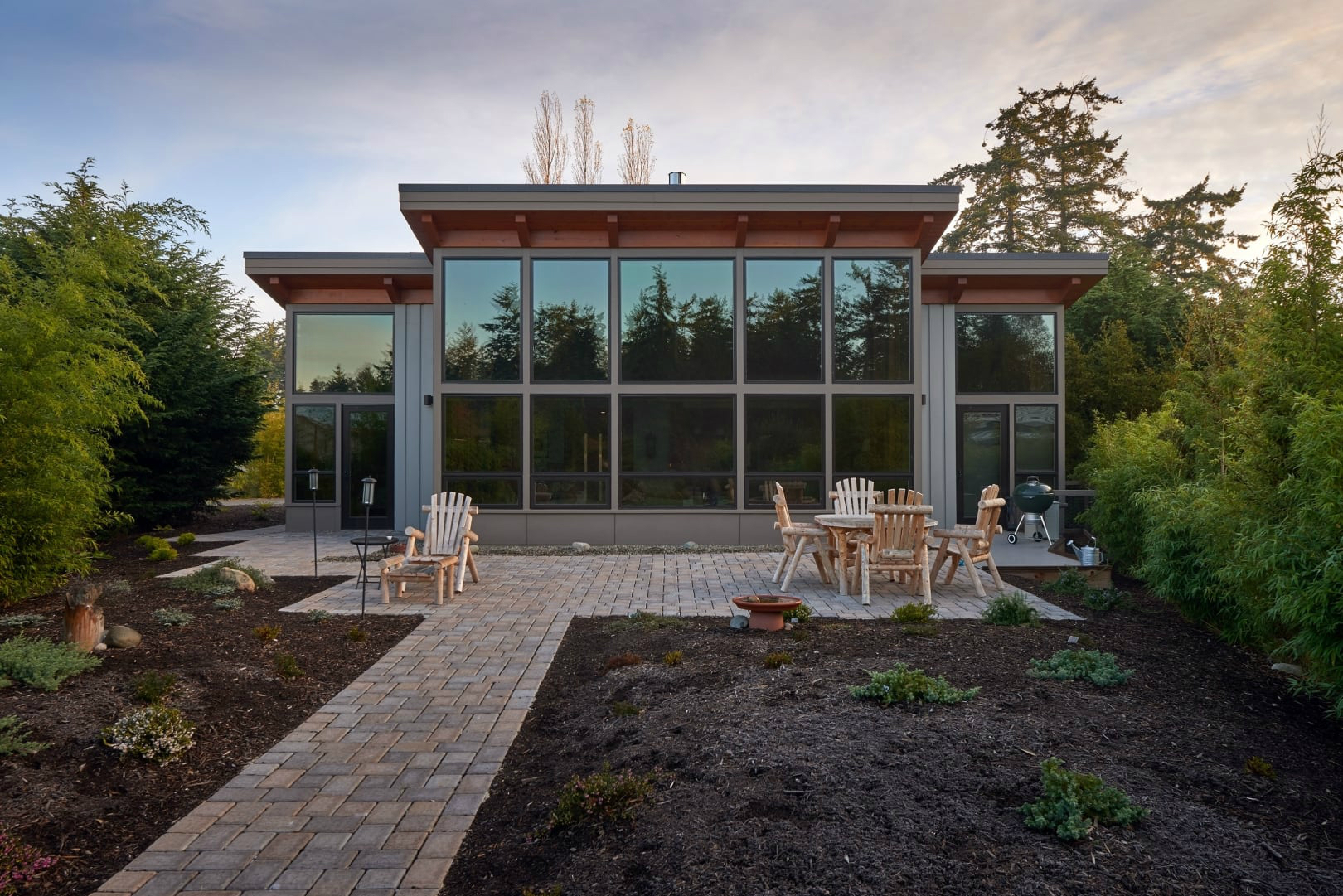The American Institute of Architects’ (AIA) Housing Knowledge Community, in conjunction with the Office of the Secretary of the U.S. Department of Housing and Urban Development (HUD), recognized four recipients of the 2016 AIA/HUD Secretary Awards.
The categories of the program include (1) Excellence in Affordable Housing Design (2) Creating Community Connection Award (3) Community-Informed Design Award and (4) Housing Accessibility - Alan J. Rothman Award. These awards demonstrate that design matters, and the recipient projects offer examples of important developments in the housing industry.
“Each of these developments are innovative housing opportunities offering seniors and families alike a place to thrive,” said HUD Secretary Julián Castro. “These winners prove that affordable and accessible housing can become part of the fabric of any neighborhood and reinforce the principles of inclusiveness and opportunity.”
(Click on the images to enlarge and the project names for more information)
Category One
Excellence in Affordable Housing- Recognizing architecture that demonstrates overall excellence in terms of design in response to both the needs and constraints of affordable housing.
Lakeside Senior Apartments | Oakland, Calif. | David Baker Architects
The project is home to 91 very-low-income and special-needs homeless seniors, many of whom have been displaced with the Bay Area’s rapidly rising housing costs. The building has extensive on-site services and is designed to support independent living, with strong transit connections to downtown Oakland and San Francisco and access to retail offerings, including a pharmacy and grocery. The high-density housing—138 units per acre—provides indoor and outdoor community spaces at both the ground floor and upper levels. The central west-facing main courtyard opens toward the street and is warmed by afternoon sun. A rooftop suite of community spaces overlooks the lake. Designed with a complementary series of sustainable strategies, the building is pending LEED for Homes Mid-Rise Platinum Certification.
Category Two
Creating Community Connection Award - Recognizing projects that incorporate housing within other community amenities for the purpose of either revitalization or planned growth.
Dorchester Art + Housing Collaborative (DA+HC) | Chicago | Landon Bone Baker Architects
As a former Chicago Housing Authority project sitting vacant since 2007, the Dorchester Art + Housing Collaborative (DA+HC) stands as the cornerstone of the recently revitalized Greater Grand Crossing neighborhood.Private, public, and non-profit sectors are transforming the neighborhood through the reactivation of abandoned buildings and cultural foundations in the under-invested neighborhood. The DA+HC features a rehabilitated block of 32 of the original 36 two- and three-bedroom townhouse units that now provide mixed-income housing. Four of the center units were removed to create the focus of the development—a 2,200-sf Arts Center with a dance studio, work and tech shops, and public meeting space.
Category Three
Community-Informed Design Award - Recognizing design that supports physical communities as they rebuild social structures and relationships that may have been weakened by outmigration, disinvestment, and the isolation of inner-city areas.
 Photo: buildingcommunityWORKSHOP
Photo: buildingcommunityWORKSHOP
Disaster Recovery Round 2 (DR2) | Houston | buildingcommunityWORKSHOP
Disaster Recovery Round 2 (DR2) launched five years after Hurricane Ike devastated the Texas Gulf Coast. The DR2 program sought to fill the remaining gap in home repair and replacement while offering homeowners choice in their disaster recovery experience. DR2 was designed to bring together the expertise of local design architects and insight from residents directly affected by the storm to build single-family, high-quality, cost-effective, sustainable designs. Through a series of community lead charrettes, the design team gathered contextual information for every affected neighborhood, including demographic research and documentation of neighborhood form and character. This approach created a relationship with the city, residents, and local designers, ensuring that the process both supported local professionals and benefited residents. Over 206 homeowners have met with the design team to select the housing options that best meet their needs.
Category Four
Housing Accessibility | Alan J. Rothman Award - Recognizing exemplary projects that demonstrate excellence in improving housing accessibility for people with disabilities.
Port Townsend Residence | Port Townsend, Wash. | FabCab
This house was designed serve both owners – he uses a power wheelchair whereas she does not. Careful site planning created a continuous accessible route from the street through the home to the terrace and onto the common garden space. The attached carport accommodates the wheelchair-accessible van with its ramp, creating a covered route from the front entrance into the van. An open plan ensures easy circulation within a modest 1,325 sf footprint. The telescoping pocket doors to the bedrooms also allow flexibility for use and connection to living spaces. The entry door and sidelight feature vertical glazing to allow viewing from any height. The kitchen and bathrooms are designed to facilitate use from both standing and seated positions. This project demonstrates that universal design and accessibility features are compatible with a warm and modern aesthetic.
Related Stories
Smart Buildings | Jan 7, 2015
Best practices for urban infill development: Embrace the region's character, master the pedestrian experience
If an urban building isn’t grounded in the local region’s character, it will end up feeling generic and out-of-place. To do urban infill the right way, it’s essential to slow down and pay proper attention to the context of an urban environment, writes GS&P's Joe Bucher.
| Jan 6, 2015
Construction permits exceeded $2 billion in Minneapolis in 2014
Two major projects—a new stadium for the Minnesota Vikings NFL team and the city’s Downtown East redevelopment—accounted for about half of the total worth of the permits issued.
| Jan 2, 2015
Construction put in place enjoyed healthy gains in 2014
Construction consultant FMI foresees—with some caveats—continuing growth in the office, lodging, and manufacturing sectors. But funding uncertainties raise red flags in education and healthcare.
Sponsored | | Dec 30, 2014
Case studies: Engineered wood brings cost savings, design flexibility across commercial project types
For commercial architects facing increasing pressure to design innovative structures while simultaneously cutting costs and accommodating tight deadlines, engineered wood systems are providing a welcome solution.
| Dec 28, 2014
Robots, drones, and printed buildings: The promise of automated construction
Building Teams across the globe are employing advanced robotics to simplify what is inherently a complex, messy process—construction.
| Dec 28, 2014
AIA course: Enhancing interior comfort while improving overall building efficacy
Providing more comfortable conditions to building occupants has become a top priority in today’s interior designs. This course is worth 1.0 AIA LU/HSW.
| Dec 28, 2014
6 trends steering today's college residence halls
University students want more in a residence hall than just a place to sleep. They want a space that reflects their style of living and learning.
| Dec 22, 2014
Studio Gang to design Chicago’s third-tallest skyscraper
The first U.S. real-estate investment by The Wanda Group, owned by China’s richest man, will be an 88-story, 1,148-ft-tall mixed-use tower designed by Jeanne Gang.
| Dec 17, 2014
ULI report looks at growing appeal of micro unit apartments
New research from the Urban Land Institute suggests that micro units have staying power as a housing type that appeals to urban dwellers in high-cost markets who are willing to trade space for improved affordability and proximity to downtown neighborhoods.
| Dec 15, 2014
SHoP Architects plans to turn NY's Seaport District into pedestrianized, mixed-use area
The scheme includes a proposed 500-foot luxury residential tower that would jut out into the harbor, extending the Manhattan grid out into the waterfront.



















